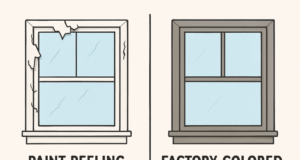New materials addenda designed to foster holistic transformation in the building product industry
WASHINGTON, D.C. – April 6, 2016 – (RealEstateRama) — USGBC announced the quarterly addenda to LEED, which includes several materials addenda designed to foster holistic transformation in the building product industry:
- A new addendum to Option 1 of the Building Product Disclosure and Optimization—Material Ingredients will provide more flexibility for product manufacturers looking to meet the requirements included in LEED v4, the newest version of the rating system. The addenda to Option 1 of the Material Ingredients credit adds the Globally Harmonized System for the Classification of Chemicals (GHS) as a referenced standard within LEED, in addition to Declare, the Cradle 2 Cradle Material Health Certificate and ANSI/BIFMA e3 Furniture Sustainability Standard.
- A new LEED pilot credit, Integrative Analysis of Building Materials, is intended to inform project team decision-making by rewarding building material manufacturers that share life cycle health, safety and environmental information about their products and qualitatively map impacts across the life cycle of a product. This pilot credit will also help international LEED projects achieve material-related LEED points. The requirements of the pilot credit ask project teams to use at least three different permanently installed products that have a documented qualitative analysis of the potential health, safety and environmental impacts of the product in five stages of the product’s life cycle. LEED project teams that successfully meet the requirements of the pilot credit will earn an innovation point toward LEED certification.
USGBC developed the LEED Pilot Credit Library as a testing ground for new and innovative strategies, to allow for real-world application and feedback on such strategies before they become a formalized part of the LEED rating systems.
“As the market experiments with existing and emerging tools and grows more adept at understanding product tradeoffs, LEED is helping to shape the landscape and guide the direction of future innovation; central to the path LEED is clearing is an understanding that transparency is a foundation on which future development will occur,” said Sara Cederberg, technical director, USGBC. “Knowing the net benefits of the materials we use is an integral piece of our longer-term strategy around materials in LEED.”
Together, the addenda to the Material Ingredients credit and the new LEED pilot credit further incentivize information sharing and lifecycle thinking, not only for those working on LEED project teams, but also for those within the building products industry. These additions, along with guidance released in November 2015 by USGBC and the Supply Chain Optimization Working Group, further support the USGBC goal to affect transformation in the building product industry.
The LEED green building certification system is the world’s most widely used program for the design, construction, maintenance and operations of green buildings. Today, nearly 75,000 commercial projects around the globe participate in LEED, with 1.85 million square feet of building space becoming LEED-certified every day.
Green construction is a large economic driver. According to the 2015 USGBC Green Building Economic Impact Study, green construction will account for more than 3.3 million U.S. jobs—more than one-third of the entire U.S. construction sector—and generate $190.3 billion in labor earnings. The industry’s direct contribution to the U.S. gross domestic product (GDP) is also expected to reach $303.5 billion from 2015–2018. For more information about the LEED credits, visit usgbc.org/LEED.
Marisa Long
Public Relations & Communications Director
U.S. Green Building Council

















